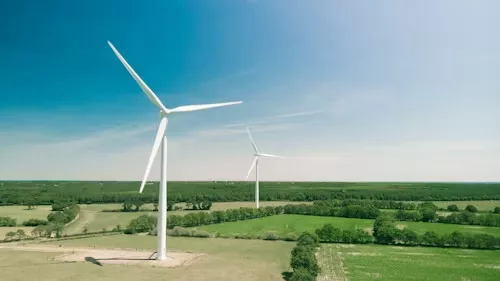The quest for offshore wind energy success is on the horizon, but achieving our national objectives involves overcoming the unpredictable nature of the high seas. The key to optimizing the performance of future offshore wind farms lies within the realm of enhanced wind forecasting.
Navigating the Turbulent Challenge
Offshore wind presents an intricate puzzle where atmosphere-ocean dynamics defy simple predictions, hampered by insufficient data that strains the accuracy of models. Stepping boldly into this challenge is the formidable alliance of the Pacific Northwest National Laboratory (PNNL) and its partners, harnessing innovative technologies and methodologies to chart a clearer path forward.
Setting Sail with WFIP3
This nautical endeavor is propelled by the Wind Forecast Improvement Project’s third phase (WFIP3), buoyed by the support of the Department of Energy‘s Wind Energy Technologies Office. With PNNL at the helm alongside the National Oceanographic and Atmospheric Administration and Woods Hole Oceanographic Institution, WFIP3 embarks with the ambition of slashing wind energy costs, already saving millions through improved forecasts.
PNNL’s odyssey began over a decade ago with WFIP’s maiden voyage on the Great Plains and continued through the complex landscapes of the Pacific Northwest with WFIP2. Today, WFIP3 faces fresh challenges as it ventures offshore for the first time.
Capturing the Wind with Novel Sensor Technologies
The high seas demand rigorous data collection—a challenge met by PNNL’s cutting-edge sensor deployments. Raghavendra Krishnamurthy, the Earth scientist steering WFIP3, elucidates the pivotal role of satellites as offshore beacons and the pressing need for detailed wind and temperature profiles to refine atmospheric models for wind energy.
A fleet of ground-based tools, spanning vast maritime expanses and seasons, has become pivotal for the crew to fathom the improvements necessary for superior forecasts.
Krishnamurthy signals to the harsh offshore conditions that demand robust and innovative instrument solutions. WFIP3’s arsenal includes an advanced atmospheric eddy-covariance flux sensor aboard a PNNL-managed floating lidar buoy in cahoots with the University at Albany. Through measuring air-sea fluxes, this equipment aims to elucidate interactions between the atmosphere and the ocean.
The Forthcoming Deployment of the Research Barge
With palpable excitement, Krishnamurthy introduces a new piece to the WFIP3 puzzle—the unveiling of a research barge in the summer of 2024. This vessel allows for the placement of potent sensors beyond the limitations of the lidar buoys and will probe the atmospheric layers soaring above the turbine rotor layer.
The barge and buoys will also bear environmental sensors such as PNNL’s ThermalTracker-3D, bridging the atmospheric conditions with the wildlife patterns around wind farms and aiding future siting decisions.
Gathering the Data for a Greener Tomorrow
PNNL captains a consortium of DOE national labs and academic institutions, already successful in deploying an array of sensing instruments and meteorological masts. These contributions are vital for enhancing the understanding of local weather patterns and their influence on offshore wind operations.
Field data will anchor itself within reach of the public via the Wind Data hub, where PNNL pledges to craft real-time data visualizations.
The Port of Call for WFIP3’s Journey
At journey’s end, WFIP3 aspires to have amassed a treasure trove of weather, oceanographic, and wildlife data. This bounty will not only enable responsible wind farm placement but also integrate seamlessly into the power grid.
The scientific breakthroughs on the horizon are set to endorse standard industry models, fostering certainty in resource assessment, reducing offshore wind development costs, and propelling benefits for both the industry and society at large.
